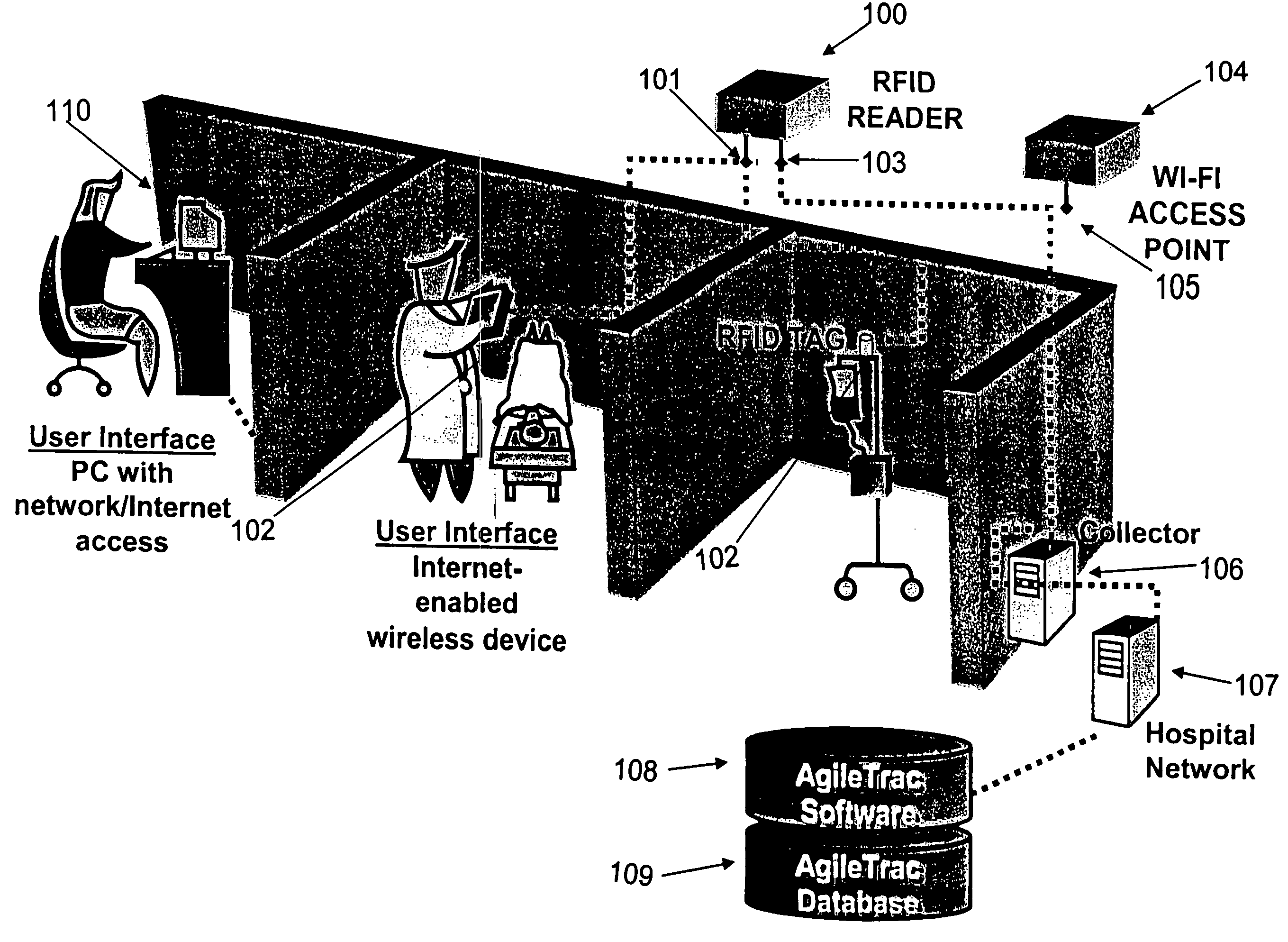Radio frequency identification asset management system and method
a technology of asset management system and radio frequency identification, applied in the direction of direction finders using radio waves, instruments, digital computer details, etc., can solve the problems of increasing the likelihood of a container being misplaced, few options available to track and manage assets, and few tools that allow hospitals to accurately track, maintain and properly distribute medical and other mobile equipmen
- Summary
- Abstract
- Description
- Claims
- Application Information
AI Technical Summary
Benefits of technology
Problems solved by technology
Method used
Image
Examples
Embodiment Construction
[0039]The following comments relate to the drawings, wherein like reference numerals designate identical or corresponding parts throughout the several views.
[0040]FIG. 1 illustrates an overview of hardware that may be used to implement the RFID tracking system according to the present invention. The system includes an RFID reader 100 including an antenna device 101 for communicating with RFID tags (or simply “tag”) 102 and internet enabled wireless devices 111, and an antenna device 103 for communicating with a Wi-Fi access point 104. The antenna on the Wi-Fi access point 105 transmits information obtained from the RFID reader 100 to a collector 106, which forwards the collected information onto the hospital network 107. Once the information is forwarded to the hospital network 107, the system software 108 in conjunction with the system database 109, can be used to manage the assets of the system. A personal computer (PC) 110 may also be provided which has access to the hospital net...
PUM
 Login to View More
Login to View More Abstract
Description
Claims
Application Information
 Login to View More
Login to View More - R&D
- Intellectual Property
- Life Sciences
- Materials
- Tech Scout
- Unparalleled Data Quality
- Higher Quality Content
- 60% Fewer Hallucinations
Browse by: Latest US Patents, China's latest patents, Technical Efficacy Thesaurus, Application Domain, Technology Topic, Popular Technical Reports.
© 2025 PatSnap. All rights reserved.Legal|Privacy policy|Modern Slavery Act Transparency Statement|Sitemap|About US| Contact US: help@patsnap.com



